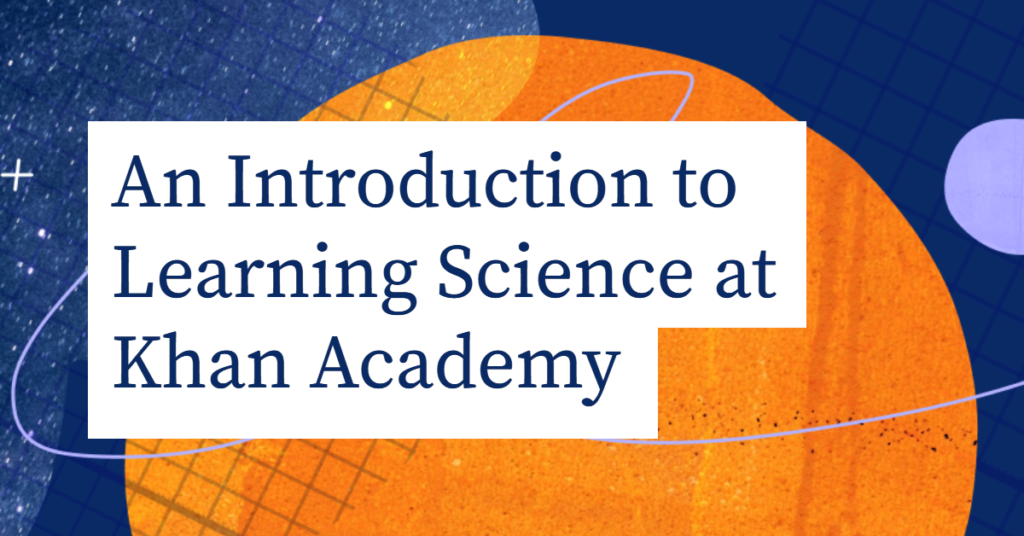The first in a four-part series about the science of learning
by Kristen DiCerbo, chief learning officer.
Learning is all about being able to apply new concepts and skills to solve problems. At Khan Academy, we provide instruction and practice with videos, articles, practice problems, and quizzes. But how are our resources designed to enable learning? We bring everything we know from decades of research about how people learn to the design of everything we do.
What Are the Learning Sciences?
People have been studying how we learn — the process of acquiring new knowledge and skills– for years. Learning science falls in different academic disciplines including educational psychology, cognitive psychology, social psychology, and more recently, neuroscience. In addition, with the advent of digital learning, we’ve included computer science, data science, and human-computer interaction. Together, all these fields make up the learning sciences. The goal of the learning sciences is to both better understand how people learn and to design and implement experiences that help people learn more effectively.
What Are Some Big Topics in Learning Science That We Adhere to at Khan Academy?
We look across years and years of research to find techniques that have consistently improved learning over many studies in different subject matters with different age groups from different demographic groups. Our work is deeply influenced by:
- Mastery learning: When a student is learning a new skill, research shows it’s most effective to work on that skill until the student is able to consistently apply it across multiple problems before moving on to the next skill. You can learn more from this video. More than 300 studies of mastery learning show it works. However, most schools are not designed to accommodate mastery learning. Instead they have a set schedule of topics and a set amount of time to spend on each topic, whether or not a student has learned it. The result can be lots of gaps for students who didn’t quite master the topic. When gaps accumulate, they can cause difficulty for months and years ahead. Using Khan Academy to supplement traditional curriculum can help fill these gaps.
- Practice with feedback: One of the most consistent findings in research about learning is that practicing with feedback leads to greater learning. Practice allows learners to manipulate and apply new information while feedback ensures learners are doing the work correctly. There has also been a good deal of work about what kinds of feedback best support learning and for whom. For example, for someone just beginning to learn something, immediate feedback that doesn’t just say if something is correct or incorrect, but explains why it leads to more learning.
- Motivation: Learning something new can be hugely rewarding, but the process itself can be challenging. Learning new things takes sustained effort over time, often in the face of obstacles. We all need help staying motivated. There is a lot of research we can draw on to help students stay motivated. One of the key theories in motivation research is called Expectancy-Value Theory. People are more likely to do things when they expect that they will be successful and when they value the thing they are doing. Expectancy-Value Theory guides how we think about motivation and the kinds of things we build in our experience to help learners learn. (Here’s an article I wrote about how to motivate students who are distance learning during COVID-19.)
So, follow along and I’ll show you in my next three blog posts how we apply research and more to build Khan Academy so learners can achieve their goals and pursue their dreams.
